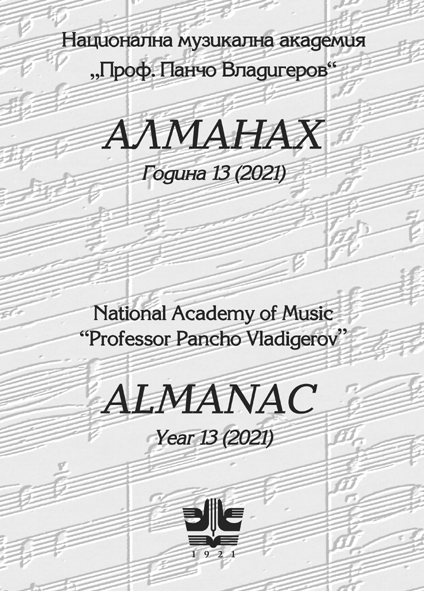Музикалното наследство на Рилския манастир
Music Heritage of the Rila Monastery
Author(s): Svetlana KujumdzievaSubject(s): Fine Arts / Performing Arts, Music
Published by: Издателство НМА „Проф. Панчо Владигеров”
Keywords: Rila monastery; musical manuscripts; Orthodox music; music of the National Revival; music of the 18th and 19th centuries; Neophyte of Rila
Summary/Abstract: This study presents the musical manuscript heritage of Rila monastery. This heritage is the largest and the richest one of neumated manuscripts in Bulgaria. The manuscripts are more than one hundred in number. They are from the 18th and 19th centuries, a period that is known as the National Revival. It is stressed that the Rila musical manuscripts represent an organic collection: they were written, collected and incorporated for the liturgical needs of the monastery, so they are part of its historical memory today. According to these manuscripts, we can reconstruct both the spiritual life in the Rila monastery, and the processes of Orthodox music development in the Balkans. Up to the 1840s, church music in Bulgaria was the only field of music with a richly documented written (notated) tradition: secular music has not been known in written format until that time, and the whole field of notated music is fully represented by the Rila musical manuscripts. It is already well known that the great number of Rila musical manuscripts testify to the existence of a large and significant singing school at the monastery, and consequently, to a large scriptorium there. Moreover, according to the manuscripts studied, this school was among the largest such schools in the Balkans. The names of the first whole generation of Bulgarian men of letters involved in music as composers, writers, copyists, and singers become known. The most distinguished among this generation are the Metropolitan Seraphim of Bosnia and Hieromonk Joasaph – pro-abbot of Rila. Joasaph’s name is among the leading authors in Balkan Orthodox music of his time. After the adoption of the New method of church music, musical activities in the monastery were taken on by the second generation of spiritual leaders around Father Neophyte of Rila. This generation was in charge of translating the entire chant repertory from the former notation into the New method one, and of creating the entire annual liturgical cycle in Slavic. The study of Rila musical manuscripts shows that the Rila monks knew the church chant theory and practice in detail: they knew precisely the intonation fund and the modal organization of the whole repertory they worked with.
Journal: Алманах - Национална музикална академия „Проф. Панчо Владигеров“
- Issue Year: 2021
- Issue No: 13
- Page Range: 148-183
- Page Count: 36
- Language: Bulgarian

